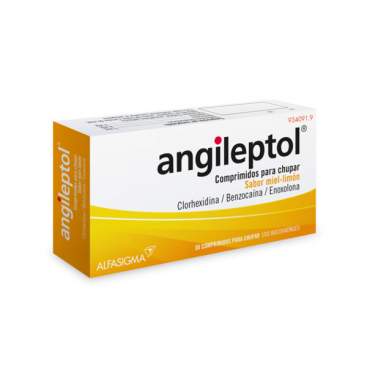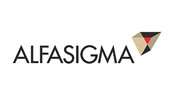Angileptol 30 Tablets Honey-Lemon
Angileptol 30 Tablets Honey-Lemon, local and temporary symptomatic relief of Bone Infections, Stomatitis and mild Pharyngitis, which occur with pain and without fever.
Angileptol 30 Tablets Honey-Lemon, local and temporary symptomatic relief of Bone Infections, Stomatitis and mild Pharyngitis, which occur with pain and without fever.
Angileptol (30 Tablets Honey-Lemon)
ACTION AND MECHANISM
Association of local anesthetic type ester, antiinflammatory and antiseptic. Benzocaine works by blocking the sensory receptors of mucous membranes locally. Chlorhexidine is a broad spectrum antiseptic with special activity against gram-positive, also has a fungistatic effect against Candida. Enoxolone is a compound or, structurally related to corticosteroids, with anti-inflammatory and mineral-corticoid properties.
INDICATIONS
- Local and temporal symptomatic relief of [MOUTH INFECTION], [STOMATITIS] and [PHARMINGITIS] mild: [ORAL AFTERS], [IRRITATION] of the throat by external aggressors such as snuff, sudden changes in temperature, dust, which occur with pain and without fever
POSOLOGY
Oropharyngeal use:
- Adults and children over 12 years: 1 tablet / 2-3 h, letting it dissolve slowly in the mouth. Maximum dose: 8 tablets / day.
- Children over 6 years: 1 tablet / 4-5 h, letting it dissolve slowly in the mouth. Maximum dose 6 tablets / day.
RULES FOR THE CORRECT ADMINISTRATION
- Oropharyngeal use.
- Dissolve slowly in the mouth, without chewing or swallowing.
- Do not use this medicine before meals or before drinking.
CONTRAINDICATIONS
- Allergy to any of the components, [ALLERGY TO LOCAL ANESTHESIA TYPE ESTER] such as PABA, parabens or paraphenylenediamine (a dye for hair).
- Children under 6 years of age, due to their special sensitivity to the systemic toxicity of benzocaine, which can produce methemoglobinemia.
PRECAUTIONS
- Chronic or abusive use: due to the mineralcorticoid effect of enoxolone there is a risk of edema formation, loss of potassium and hypertension.
Evaluate the risk-benefit ratio in the following cases:
- Severe trauma of the oral mucosa (increases the absorption of anesthetics).
- Fillings of the incisors: if their surface is rough, there is a risk of permanent coloration due to chlorhexidine.
PRECAUTIONS RELATIVE TO EXCIPIENTS
- This medicine contains sorbitol. Patients with hereditary [INTOLERANCE TO FRUCTOSE] should not take this medicine.
PATIENT TIPS
- If the symptoms worsen or persist after 2-3 days, a visit to the doctor may be advised.
- Maintain proper oral hygiene, special antisecrete toothpaste, to reduce the coloration of the teeth caused by chlorhexidine.
INTERACTIONS
- Topical hydrocortisone: possible increase in the topical effect of hydrocortisone (animal studies). It has not been determined if systemic absorption and toxicity also increases.
Analytical interference:
- Benzocaine: Possible interference with the diagnostic test for determination of pancreatic function using bentiromide. It is advisable to suppress the treatment, at least 3 days before the test.
PREGNANCY
Use not recommended due to the mineral corticosteroid effects manifested by enoxolone, with high doses during prolonged treatments.
LACTATION
Not recommended use.
CHILDREN
Children are more susceptible to the systemic toxic effects of benzocaine.
ELDERLY
The elderly are especially sensitive during prolonged treatments to the mineralcortioic effects of enoxolone and to the systemic toxicity of benzocaine.
ADVERSE REACTIONS
Adverse effects are, in general, mild and transient. The most characteristic adverse reactions are:
-Occasionally: coloring of the oral surfaces (teeth, gums, tongue, fillings, etc.) that are visible within a week of treatment. The coloration of the tongue disappears spontaneously. The coloring of the teeth can be eliminated by oral cleaning. The coloring of the fillings can be permanent. Increased tartar of the teeth, alteration of the perception of taste.
Enoxolone at high doses (60 mg / day) and during prolonged treatments can produce edema, hypertension and hypokalemia.
-Raramente (<1%): Anaphylactoid reaction, burning sensation in the mouth.
-Exceptionally (<< 1%): methemoglobinemia characterized by cyanosis.




